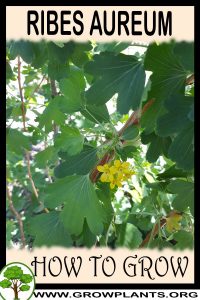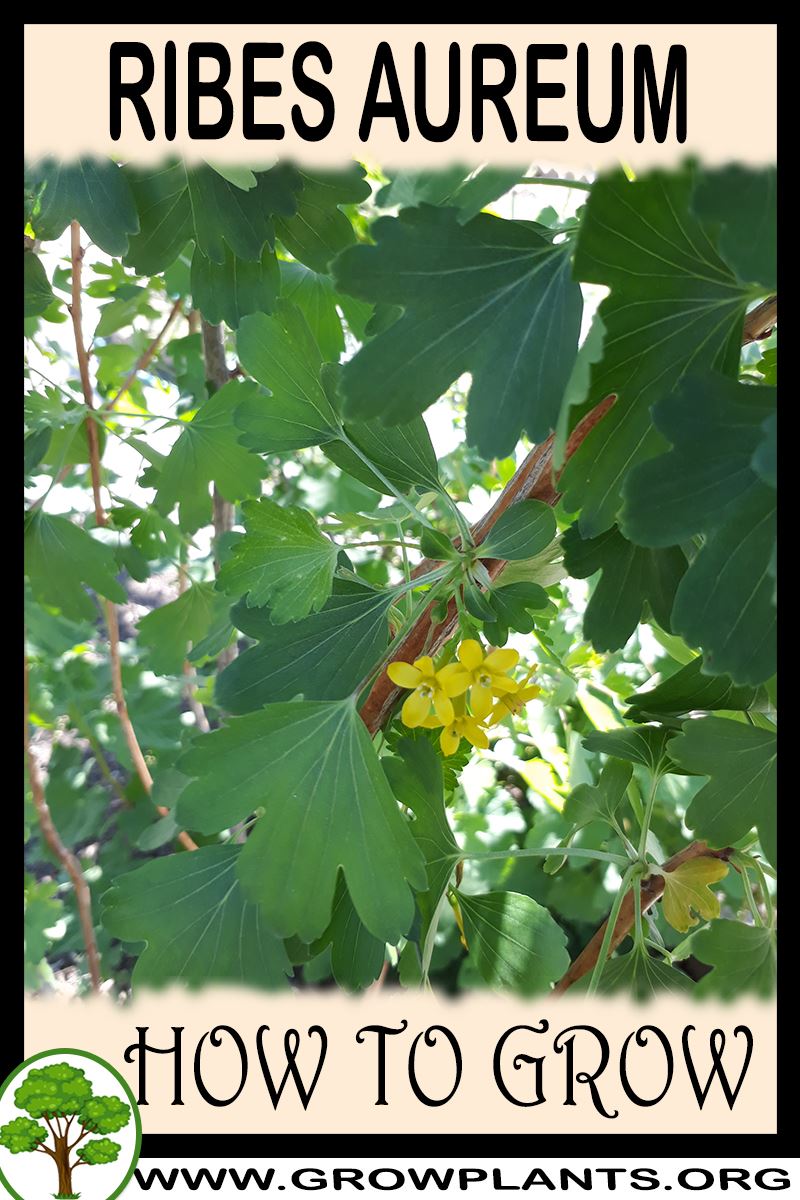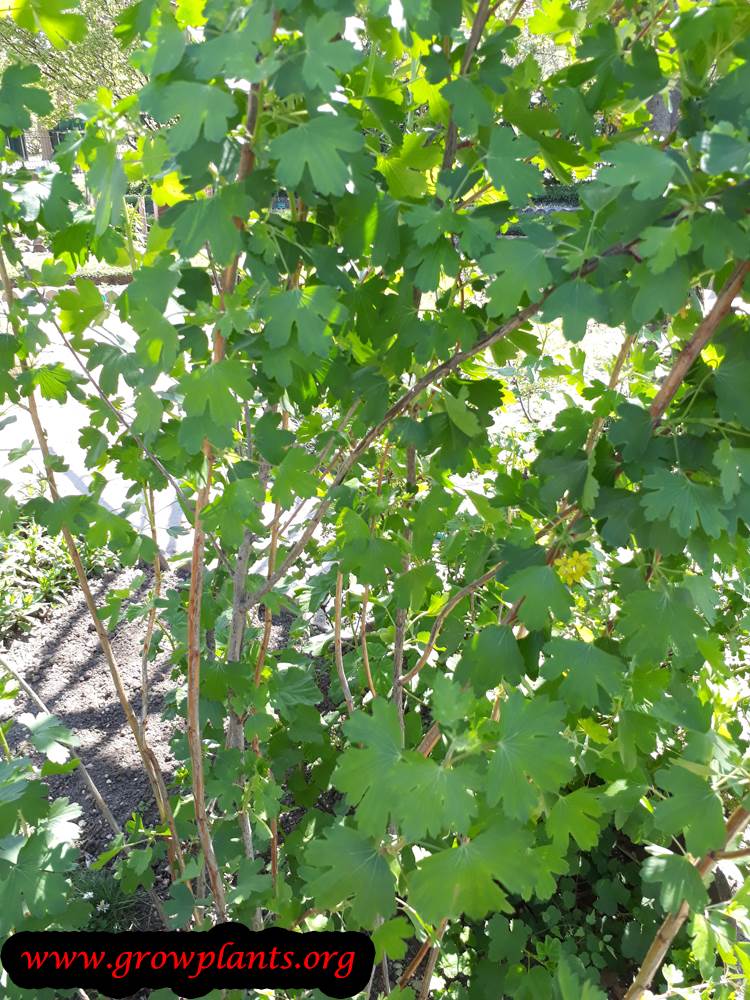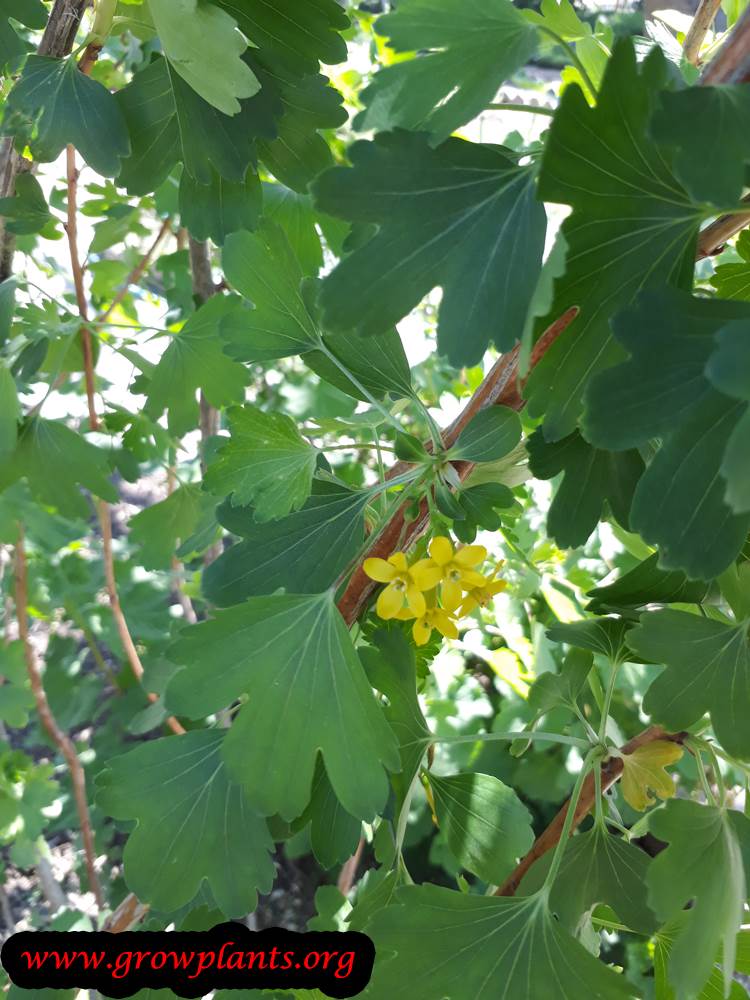
Ribes aureum grow and care – shrub of the genus Ribes also known as Golden currant, Ribes aureum perennial deciduous plant used as for the edible fruit and also as ornamental plant and drought tolerant, grow in temperate climate and growing in hardiness zone 3-8 and with the right care in hardiness zone 9-10a.
Leaves green, with 3-5 lobes and serrated edges.
Flower color yellow, grow in clusters, 5-20+ flowers in cluster.
Ribes aureum edible fruits
Fruit edible color yellow or red-purple the size 0.5-1.5 cm
Ribes aureum for sale – Seeds or Plants to Buy
How to grow Ribes aureum growing and care:
Chilling hours, mulch, moist soil, well-drained soil, slightly acid, rich soil
How to care:
Fertilize once a year, prune once a year, add organic matter
What is the best way to start growing?
Plant / Seed (explanation bellow) / Vegetative Reproduction – Suckers or Cutting in the late winter to early spring (possible in green house in other season), moist soil and high humidity better to use root growth hormone, better to use peat soil, for suckers need to separate in the winter and transplant them.
Is it necessary to use vegetative reproduction?
Yes, it’s harder to start from seeds
Difficulties or problems when growing:
Sensitive to a lot types of pests, thorns
Planting season:
Winter, spring possible in the summer but better not, when planting bare roots winter to early spring after this it might die
How to plant:
Planting when start in bare root important to cut part of the roots and the plant, put organic matter, humus, dead leaves and mix it with the soil (acid soil), when planting need to increase the amount of water
Pests and diseases:
Gall, aphids, spider mite
Pruning season:
End of the autumn to beginning of the winter, but if there isn’t a lot of fruits better after the fruits season
How to prune:
Prune the week branches and dead, crossing branch, in order to get bigger fruits better to reduce the buds in order to get bigger fruits, old stems, reduce the amount of branches and need to take care that all the fruits will get enough light, branches older than 4 years, not to leave a lot of branches on the plant (not crowded) when the plant crowded fruits less good and get infected easily
Size of the plant:
1-3m, 40-120 inches
Growth speed in optimal condition:
Medium growing
Water requirement:
Average amount of water / Small amount of water
Light conditions in optimal condition for growing:
Full Sun / Half Shade
Is it possible to grow indoor as houseplant?
No
Growing is also possible in a pot, planter, flowerpot, containers:
Yes, in pots need to keep the plants small, start with pot that will be 20-50% more than the root ball, bigger the plant smaller the percentage, every time that the plant arrive to full capacity need to switch to bigger until arrives to desirable size, better to use this method because the soil lose the viability over time and it’s efficient of care for the plant, when the plant big need to switch part of the soil, drainage it’s important and need to make holes and to use peat soil and maybe some lava grit in the bottom or something like that, put a bottom for the container and when water the plant let it fill the bottom but also need to dry in the same day.
Blooming information
Bloom season:
Spring
General information about the flower
Yellow flower, the flowers grow in clusters, 5-20+ flowers in cluster.
Pollination is done by:
Bees, wind
Edible fruits
Fruit harvest season:
Summer / Autumn
Fruits pests or diseases:
Birds
What can be done with big quantities of Ribes aureum fruits?
Eat raw, juice, cakes, jam
Work requirements on the fruit:
In massive bird attack recommend to cover with a net
How long does it take to bear fruit?
1-2 years
Scientific name:
Ribes aureum
Alternative names: Golden currant, Clove currant, Pruterberry, Buffalo currant
Categories
| Blooming Seasons |
|
|---|---|
| Edible Parts |
|
| Culinary uses |
|
| Flower colors |
|
| Climate |
|
| Harvest Season |
|
| Ornamental parts |
|
| Plant growing speed |
|
| Plant life-form |
|
| Plant Uses |
|
| Planting Season |
|
| Plants sun exposure |
|
| Watering plants |
|
| Hardiness zone |
|




